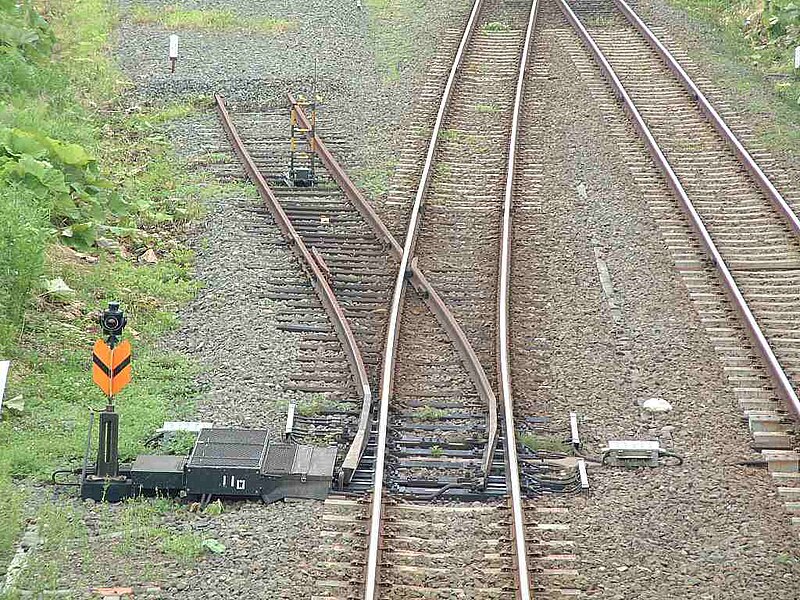magickmaker
New member
I'm looking for information on this type of track switch that I've only ever seen once or twice. Problem is I don't recall WHERE I saw pictures of it, or even where it was located. I do recall a good bit of information about it though, which I'll recount here.
This switch...well it wasn't really a switch, but we'll call it that. It was used by logging railroads on very steep grades. If you looked at the track head on, you'd see the normal rails, but at the bottom of the grade, you'd see rails pushing off to each side. Basically the running rails would be curved off to each side of the track, looking like a 3 way switch, but with the middle points removed. This type of switch was used to deal with a problem that arose when trains going down very steep grades, applied their brakes. It was not uncommon for the rails, which were only barely attached to begin with, to "slide" in their fishplates and ties. The pressure of the heavy train of logs causing them to move forward several feet at a time. Since this could cause the track to go out of gauge, the railroads hit upon this solution. As the trains came down the grade, it would apply its brakes. Should the rails slide, they were now allowed to do so, with the excess just going off to either side of the main track. Thus, no accident would happen. Once the train reached the bottom, a crew would go in and either cut or just remove the excess section of rail and then head back up to bolt it into place to fill whatever gap had been caused by the sliding.
The image I saw had a Shay coming down this grade, with the curious "switch" on either side of the track. Anyone know where I could have seen this, or the type of "switch" I'm talking about?
This switch...well it wasn't really a switch, but we'll call it that. It was used by logging railroads on very steep grades. If you looked at the track head on, you'd see the normal rails, but at the bottom of the grade, you'd see rails pushing off to each side. Basically the running rails would be curved off to each side of the track, looking like a 3 way switch, but with the middle points removed. This type of switch was used to deal with a problem that arose when trains going down very steep grades, applied their brakes. It was not uncommon for the rails, which were only barely attached to begin with, to "slide" in their fishplates and ties. The pressure of the heavy train of logs causing them to move forward several feet at a time. Since this could cause the track to go out of gauge, the railroads hit upon this solution. As the trains came down the grade, it would apply its brakes. Should the rails slide, they were now allowed to do so, with the excess just going off to either side of the main track. Thus, no accident would happen. Once the train reached the bottom, a crew would go in and either cut or just remove the excess section of rail and then head back up to bolt it into place to fill whatever gap had been caused by the sliding.
The image I saw had a Shay coming down this grade, with the curious "switch" on either side of the track. Anyone know where I could have seen this, or the type of "switch" I'm talking about?


